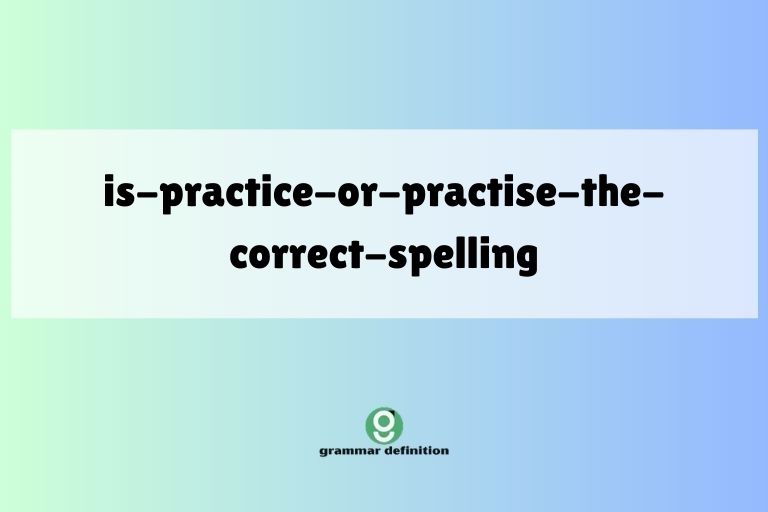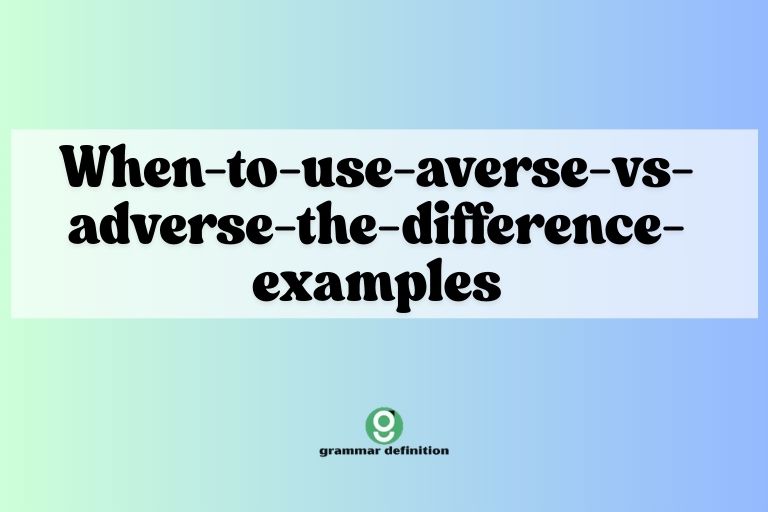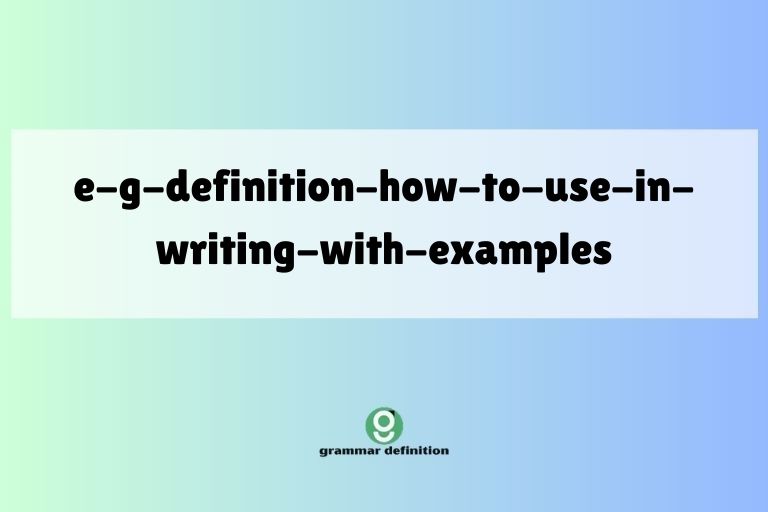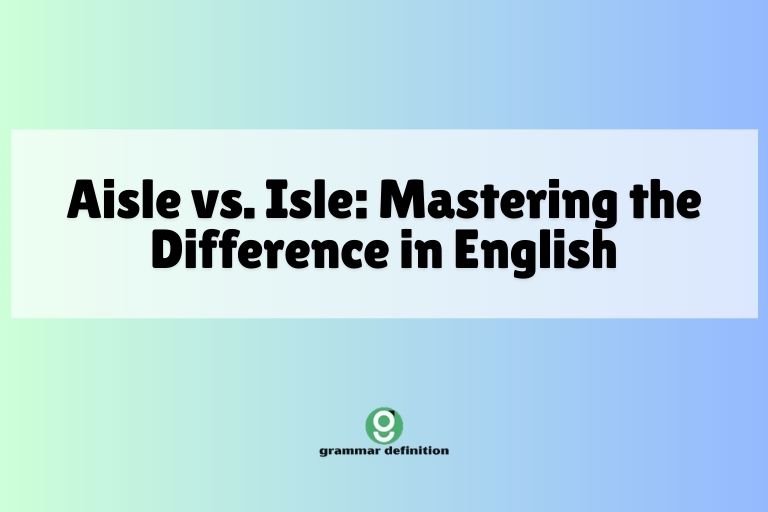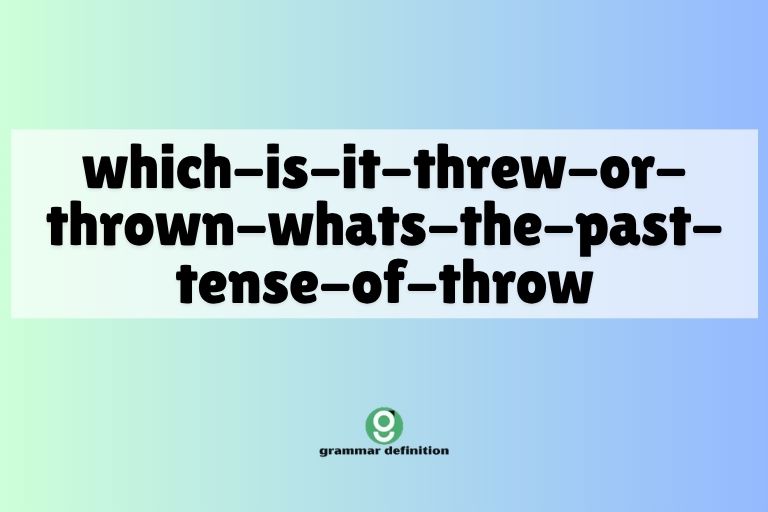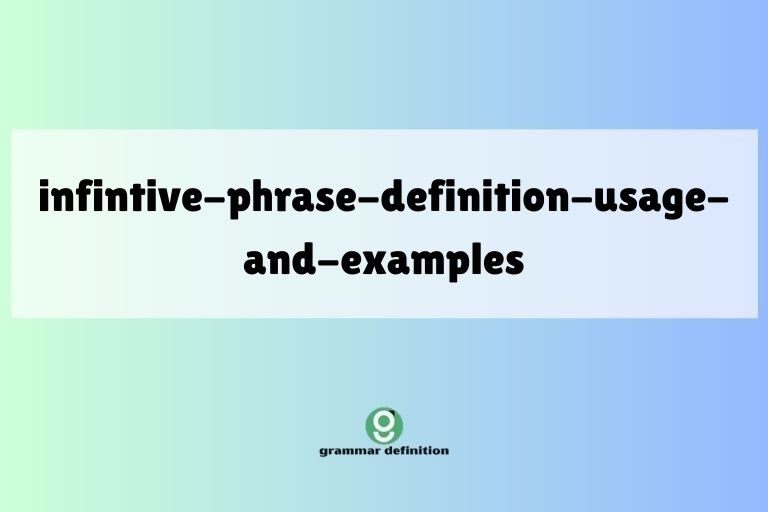Exclamatory Sentences: Definition, Usage, and Examples
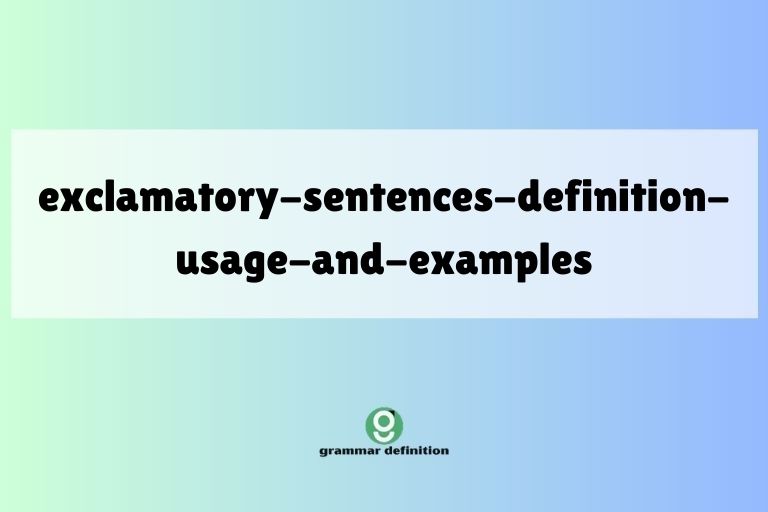
Exclamatory sentences are powerful tools in the English language, capable of conveying strong emotions and adding emphasis to our expressions. Mastering their usage can significantly enhance your ability to communicate effectively and expressively.
This article will provide a comprehensive guide to exclamatory sentences, covering their definition, structure, types, and proper usage. Whether you’re a student, a writer, or simply someone looking to improve your English skills, this guide will equip you with the knowledge and practice you need to confidently use exclamatory sentences.
Table of Contents
- Introduction
- Definition of Exclamatory Sentences
- Structural Breakdown of Exclamatory Sentences
- Types and Categories of Exclamatory Sentences
- Examples of Exclamatory Sentences
- Usage Rules for Exclamatory Sentences
- Common Mistakes with Exclamatory Sentences
- Practice Exercises
- Advanced Topics in Exclamatory Sentences
- Frequently Asked Questions
- Conclusion
Introduction
Exclamatory sentences add vibrancy and emotional depth to our communication. They allow us to express a wide range of feelings, from joy and excitement to surprise and anger.
Understanding and using exclamatory sentences correctly can make your writing and speech more engaging and impactful. This guide will delve into the intricacies of exclamatory sentences, providing a solid foundation for both beginners and advanced learners.
By the end of this article, you’ll be able to identify, construct, and use exclamatory sentences with confidence and precision.
Definition of Exclamatory Sentences
An exclamatory sentence is a type of sentence that expresses strong emotion or feeling. It conveys a high degree of surprise, excitement, anger, or any other intense emotion. These sentences are easily identifiable by their use of an exclamation mark (!) at the end. The main function of an exclamatory sentence is to express a sudden outburst of feeling or a strong reaction to something. They are often used to emphasize a point or to add drama to a situation.
Exclamatory sentences can be classified based on their structure and the type of emotion they convey. They can be statements, questions, or commands, but they always carry a strong emotional charge.
The context in which an exclamatory sentence is used is crucial in understanding the specific emotion being expressed. For example, “What a beautiful day!” expresses joy and appreciation, while “Get out of here!” expresses anger and urgency.
Here’s a table summarizing the key characteristics of exclamatory sentences:
| Characteristic | Description |
|---|---|
| Purpose | To express strong emotion or feeling |
| Ending punctuation | Exclamation mark (!) |
| Emotion conveyed | Surprise, joy, anger, fear, etc. |
| Structure | Can be statements, questions, or commands |
| Effect | Adds emphasis and drama to communication |
Structural Breakdown of Exclamatory Sentences
The structure of an exclamatory sentence often follows specific patterns, although there’s no single rigid formula. The most common structures involve the use of introductory words like “What” and “How,” followed by specific sentence elements.
Understanding these patterns can help you construct effective and grammatically correct exclamatory sentences.
“What” Exclamatory Sentences
Sentences starting with “What” usually emphasize a noun or noun phrase. The basic structure is: What + (a/an) + adjective + noun + subject + verb! For example, “What a beautiful sunset it is!” The article “a” or “an” is used depending on whether the adjective starts with a consonant or a vowel sound, respectively. These sentences often express admiration or surprise.
“How” Exclamatory Sentences
Sentences starting with “How” typically emphasize an adjective or adverb. The structure is: How + adjective/adverb + subject + verb! For example, “How quickly she runs!” These sentences often express the degree or intensity of a quality or action. The subject and verb can sometimes be omitted if the meaning is clear from the context.
Other Exclamatory Structures
While “What” and “How” are common, other structures also create exclamatory sentences. These include simple statements or commands punctuated with an exclamation mark.
For example, “I can’t believe it!” or “Stop!”. The key is the strong emotion conveyed, regardless of the specific grammatical structure.
Interjections such as “Wow!” or “Oh!” can also stand alone as exclamatory expressions.
Here’s a table summarizing the common structures of exclamatory sentences:
| Structure | Example | Emphasis |
|---|---|---|
| What + (a/an) + adjective + noun + subject + verb! | What a wonderful world it is! | Noun phrase |
| How + adjective/adverb + subject + verb! | How beautifully she sings! | Adjective/adverb |
| Simple statement + ! | I won the lottery! | Overall statement |
| Command + ! | Run! | Action |
| Interjection + ! | Wow! | Expression of feeling |
Types and Categories of Exclamatory Sentences
Exclamatory sentences can be categorized based on the type of emotion they express and their grammatical structure. Understanding these categories can help you choose the most appropriate type of exclamatory sentence for a given situation.
Exclamations of Joy and Excitement
These sentences express happiness, delight, and enthusiasm. They often use positive adjectives and adverbs to amplify the feeling.
Examples include: “What a fantastic party this is!” and “How wonderful to see you!”.
Exclamations of Surprise and Wonder
These sentences express astonishment, amazement, and awe. They often use words like “amazing,” “incredible,” and “unbelievable.” Examples include: “What an incredible coincidence!” and “How breathtaking the view is!”.
Exclamations of Anger and Frustration
These sentences express annoyance, irritation, and displeasure. They often use strong verbs and negative adjectives.
Examples include: “What a terrible thing to say!” and “How dare you!”.
Exclamations of Fear and Alarm
These sentences express apprehension, anxiety, and panic. They often use words like “danger,” “help,” and “look out.” Examples include: “What a dangerous situation!” and “Look out!”.
Exclamations of Disgust and Disapproval
These sentences express aversion, dislike, and condemnation. They often use words like “disgusting,” “awful,” and “shameful.” Examples include: “What an awful smell!” and “How disgusting!”.
Here’s a table summarizing the categories of exclamatory sentences based on emotion:
| Category | Emotion | Example |
|---|---|---|
| Joy and Excitement | Happiness, delight, enthusiasm | What a fantastic achievement! |
| Surprise and Wonder | Astonishment, amazement, awe | How incredible that is! |
| Anger and Frustration | Annoyance, irritation, displeasure | What a ridiculous idea! |
| Fear and Alarm | Apprehension, anxiety, panic | Look out! |
| Disgust and Disapproval | Aversion, dislike, condemnation | How disgusting! |
Examples of Exclamatory Sentences
This section provides a wide range of examples of exclamatory sentences, organized by category, to illustrate their usage and structure. Each category includes numerous examples to help you understand the nuances of exclamatory expressions.
Examples Using “What”
These examples demonstrate the use of “What” at the beginning of exclamatory sentences, emphasizing a noun or noun phrase. Notice how the structure varies slightly depending on the specific context and the noun being emphasized.
| Example | Emotion Conveyed |
|---|---|
| What a beautiful day it is! | Joy, appreciation |
| What a terrible mistake I made! | Regret, disappointment |
| What a lovely surprise this is! | Delight, gratitude |
| What an incredible performance! | Admiration, awe |
| What a silly thing to do! | Disapproval, amusement |
| What a delicious meal! | Enjoyment, satisfaction |
| What a long day it has been! | Exhaustion, relief |
| What a fantastic opportunity! | Excitement, anticipation |
| What a clever idea! | Admiration, approval |
| What a mess! | Disgust, frustration |
| What a relief to see you! | Relief, happiness |
| What a shock! | Surprise, disbelief |
| What a waste of time! | Frustration, anger |
| What a shame that is! | Regret, disappointment |
| What a wonderful gift! | Gratitude, joy |
| What a nightmare! | Fear, anxiety |
| What a bargain! | Excitement, satisfaction |
| What a disaster! | Panic, despair |
| What a coincidence! | Surprise, amusement |
| What a sight! | Amazement, wonder |
| What a load of nonsense! | Disbelief, anger |
| What a pity! | Sympathy, sadness |
| What a stroke of luck! | Joy, gratitude |
| What a challenge! | Excitement, determination |
| What a treat! | Delight, pleasure |
Examples Using “How”
These examples demonstrate the use of “How” at the beginning of exclamatory sentences, emphasizing an adjective or adverb. Pay attention to how the placement of the adjective or adverb affects the overall meaning and emotional impact.
| Example | Emotion Conveyed |
|---|---|
| How beautiful she is! | Admiration, appreciation |
| How quickly time flies! | Surprise, nostalgia |
| How wonderful to see you again! | Joy, delight |
| How incredibly talented he is! | Awe, admiration |
| How silly of me! | Amusement, self-deprecation |
| How delicious this cake is! | Enjoyment, satisfaction |
| How tired I am! | Exhaustion, weariness |
| How exciting this is! | Anticipation, enthusiasm |
| How kind of you to help! | Gratitude, appreciation |
| How awful! | Disgust, disapproval |
| How relieved I am! | Relief, happiness |
| How shocking! | Surprise, disbelief |
| How frustrating this is! | Frustration, anger |
| How sad that is! | Regret, disappointment |
| How generous of you! | Gratitude, appreciation |
| How scary! | Fear, anxiety |
| How lucky I am! | Gratitude, joy |
| How dreadful! | Fear, despair |
| How surprising! | Surprise, amusement |
| How amazing! | Amazement, wonder |
| How ridiculous! | Disbelief, anger |
| How unfortunate! | Sympathy, sadness |
| How fortunate I am! | Joy, gratitude |
| How challenging! | Excitement, determination |
| How pleasant! | Delight, pleasure |
Simple Exclamatory Sentences
These examples demonstrate exclamatory sentences that are simple statements or commands punctuated with an exclamation mark. The emotion is conveyed through the content of the sentence and the use of the exclamation mark.
| Example | Emotion Conveyed |
|---|---|
| I won! | Joy, excitement |
| Help! | Fear, panic |
| Stop! | Anger, urgency |
| I can’t believe it! | Surprise, disbelief |
| That’s incredible! | Awe, admiration |
| I’m so happy! | Joy, contentment |
| It’s a disaster! | Panic, despair |
| I hate this! | Anger, frustration |
| I’m so excited! | Anticipation, enthusiasm |
| Get out! | Anger, command |
| I’m so proud of you! | Pride, admiration |
| That’s amazing! | Amazement, wonder |
| I understand now! | Relief, understanding |
| I’m so disappointed! | Regret, sadness |
| I’m so grateful! | Gratitude, appreciation |
| I’m terrified! | Fear, anxiety |
| I did it! | Joy, accomplishment |
| It’s over! | Relief, sadness |
| I’m shocked! | Surprise, disbelief |
| It’s a miracle! | Awe, wonder |
| I’m furious! | Anger, rage |
| I’m so lucky! | Gratitude, joy |
| That’s outrageous! | Disbelief, anger |
| I’m so sorry! | Regret, remorse |
| I’m relieved! | Relief, happiness |
Usage Rules for Exclamatory Sentences
Using exclamatory sentences effectively requires understanding the rules that govern their proper use. These rules ensure that your exclamations are grammatically correct and convey the intended emotion clearly.
Use Exclamation Marks Sparingly
Overusing exclamation marks can diminish their impact and make your writing seem overly dramatic or insincere. Use them only when you genuinely want to express strong emotion or emphasis.
In formal writing, it’s generally best to use exclamatory sentences sparingly.
Ensure Grammatical Correctness
Exclamatory sentences must still adhere to the basic rules of grammar. Ensure that your sentences have a subject and verb (unless it’s a command or interjection) and that the word order is correct.
Even though the primary purpose is to express emotion, grammatical errors can detract from the message.
Consider the Context
The appropriateness of using an exclamatory sentence depends on the context. In formal settings, such as academic writing or business communication, exclamatory sentences should be used carefully and only when necessary to emphasize a point.
In informal settings, such as personal emails or conversations with friends, exclamatory sentences can be used more freely.
Avoid Clichés
Try to avoid using overused or clichéd exclamatory expressions, as they can sound insincere or unoriginal. Instead, strive to express your emotions in a fresh and creative way.
For example, instead of saying “What a surprise!”, you could say “What an unexpected pleasure!”.
Vary Your Sentence Structure
To keep your writing engaging, vary the structure of your exclamatory sentences. Use a mix of “What” and “How” sentences, as well as simple statements and commands.
This will prevent your writing from becoming monotonous and keep your readers interested.
Here’s a table summarizing the usage rules for exclamatory sentences:
| Rule | Description |
|---|---|
| Use Sparingly | Avoid overusing exclamation marks to maintain their impact. |
| Ensure Grammatical Correctness | Adhere to basic grammar rules, even in exclamatory sentences. |
| Consider the Context | Use exclamatory sentences appropriately based on the formality of the situation. |
| Avoid Clichés | Strive for originality in your exclamatory expressions. |
| Vary Sentence Structure | Use a mix of different exclamatory sentence structures to keep your writing engaging. |
Common Mistakes with Exclamatory Sentences
Even with a good understanding of exclamatory sentences, it’s easy to make mistakes. This section highlights some common errors and provides correct examples to help you avoid them.
Overuse of Exclamation Marks
Incorrect: I can’t believe it!!! It’s amazing!!! I’m so happy!!!
Correct: I can’t believe it! It’s amazing! I’m so happy!
Using too many exclamation marks dilutes their impact. One exclamation mark is usually sufficient to convey strong emotion.
Incorrect Word Order
Incorrect: What beautiful is the day!
Correct: What a beautiful day it is!
Exclamatory sentences with “What” follow a specific word order. Ensure that you place the adjective and noun correctly.
Misuse of “What” and “How”
Incorrect: How a beautiful day!
Correct: What a beautiful day!
“What” is used before a noun phrase, while “How” is used before an adjective or adverb.
Lack of Subject-Verb Agreement
Incorrect: How happy I is!
Correct: How happy I am!
Ensure that the verb agrees with the subject in your exclamatory sentences.
Using Exclamatory Sentences Inappropriately
Incorrect (in a formal report): The results were fantastic!
Correct (in a formal report): The results were highly significant.
In formal writing, avoid using exclamatory sentences unless they are absolutely necessary. Opt for more neutral and objective language.
Here’s a table summarizing common mistakes and corrections:
| Mistake | Incorrect Example | Correct Example |
|---|---|---|
| Overuse of Exclamation Marks | That’s incredible!!! | That’s incredible! |
| Incorrect Word Order | What amazing is the view! | What an amazing view! |
| Misuse of “What” and “How” | How a lovely garden! | What a lovely garden! |
| Lack of Subject-Verb Agreement | How excited she is! | How excited she is! |
| Inappropriate Use in Formal Writing | The project was a huge success! | The project was highly successful. |
Practice Exercises
Test your understanding of exclamatory sentences with these practice exercises. Each exercise focuses on a different aspect of exclamatory sentence construction and usage.
Answers are provided at the end of each exercise.
Exercise 1: Identifying Exclamatory Sentences
Identify which of the following sentences are exclamatory. Indicate “Yes” if it is an exclamatory sentence and “No” if it is not.
| Sentence | Exclamatory? (Yes/No) |
|---|---|
| 1. What a beautiful painting that is! | |
| 2. Please close the door. | |
| 3. How quickly the time passes! | |
| 4. I am going to the store. | |
| 5. What an incredible achievement! | |
| 6. Can you help me with this? | |
| 7. How delicious this is! | |
| 8. The sun is shining brightly. | |
| 9. What a surprise! | |
| 10. Stop! |
Answers: 1. Yes, 2. No, 3. Yes, 4. No, 5. Yes, 6. No, 7. Yes, 8. No, 9. Yes, 10. Yes
Exercise 2: Completing Exclamatory Sentences
Complete the following sentences to make them exclamatory, using appropriate words and punctuation.
| Sentence | Completed Sentence |
|---|---|
| 1. What __________ beautiful garden this is! | |
| 2. How __________ she sings! | |
| 3. __________ a wonderful day! | |
| 4. What __________ amazing story! | |
| 5. How __________ I am! | |
| 6. __________ out! | |
| 7. What __________ fantastic idea! | |
| 8. How __________ the weather is! | |
| 9. __________ a mess! | |
| 10. How __________ he runs! |
Answers: 1. a, 2. beautifully, 3. What, 4. an, 5. tired, 6. Look, 7. a, 8. terrible, 9. What, 10. quickly
Exercise 3: Rewriting Sentences as Exclamations
Rewrite the following sentences as exclamatory sentences, adding appropriate punctuation and changing the wording as necessary.
| Sentence | Exclamatory Sentence |
|---|---|
| 1. The sunset is very beautiful. | |
| 2. I am very surprised. | |
| 3. That was a great performance. | |
| 4. This cake is very delicious. | |
| 5. He is an incredibly talented musician. | |
| 6. I am very happy to see you. | |
| 7. That is a terrible thing to say. | |
| 8. The situation is very dangerous. | |
| 9. The smell is awful. | |
| 10. I am incredibly lucky. |
Answers: 1. What a beautiful sunset!, 2. How surprised I am!, 3. What a great performance that was!, 4. How delicious this cake is!, 5. What an incredibly talented musician he is!, 6. How happy I am to see you!, 7. What a terrible thing to say!, 8. What a dangerous situation!, 9. What an awful smell!, 10. How incredibly lucky I am!
Advanced Topics in Exclamatory Sentences
For advanced learners, this section delves into more complex aspects of exclamatory sentences, including variations in structure, subtle nuances of meaning, and their use in literary contexts.
Elliptical Exclamatory Sentences
Elliptical exclamatory sentences are those that omit certain words or phrases, relying on context for understanding. These sentences are often used in informal speech and writing.
For example, instead of saying “How amazing that is!”, you might simply say “Amazing!”. The omitted words are understood from the surrounding conversation or text.
Exclamatory Questions
Exclamatory questions are questions that are asked not to elicit information but to express surprise, disbelief, or some other strong emotion. These questions often have a rhetorical effect.
For example, “Can you believe it?”. While they are phrased as questions, they function as exclamations.
Exclamatory Sentences in Literature
In literature, exclamatory sentences are often used to create dramatic effect, emphasize key moments, and convey the emotional state of characters. Authors may use a variety of exclamatory structures and expressions to add depth and intensity to their writing.
Analyzing the use of exclamatory sentences in literary works can provide valuable insights into the author’s style and the themes of the work.
Subtle Nuances of Meaning
The meaning of an exclamatory sentence can vary depending on the tone of voice, facial expression, and body language used when delivering it. A sentence like “What a surprise!” can express genuine delight, sarcastic disbelief, or mild amusement, depending on how it is said.
Understanding these subtle nuances is crucial for effective communication.
Frequently Asked Questions
This section addresses common questions about exclamatory sentences, providing clear and concise answers to help you further your understanding.
Q1: What is the main purpose of an exclamatory sentence?
A1: The main purpose of an exclamatory sentence is to express strong emotion or feeling. It conveys a high degree of surprise, excitement, anger, or any other intense emotion.
Exclamatory sentences add emphasis and drama to communication.
Q2: How can I identify an exclamatory sentence?
A2: Exclamatory sentences are typically identified by the presence of an exclamation mark (!) at the end. They also often begin with words like “What” or “How” and express a strong emotion.
Q3: Can an exclamatory sentence be a question?
A3: Yes, an exclamatory sentence can be a question. These are known as exclamatory questions, and they are used to express surprise or disbelief rather than to seek information.
For example, “Can you believe it!”.
Q4: Is it appropriate to use exclamatory sentences in formal writing?
A4: In formal writing, exclamatory sentences should be used sparingly. Overusing them can make your writing seem overly emotional or unprofessional.
Use them only when necessary to emphasize a point.
Q5: What is the difference between “What” and “How” exclamatory sentences?
A5: “What” exclamatory sentences emphasize a noun or noun phrase, while “How” exclamatory sentences emphasize an adjective or adverb. For example, “What a beautiful day!” emphasizes the noun phrase “a beautiful day,” while “How beautiful the day is!” emphasizes the adjective “beautiful.”
Q6: How can I improve my use of exclamatory sentences?
A6: To improve your use of exclamatory sentences, practice identifying them in different contexts, experiment with different sentence structures, and pay attention to the emotions you are trying to convey. Also, be mindful of the context and avoid overusing exclamation marks.
Q7: Are there any exceptions to the rules of exclamatory sentences?
A7: Yes, there are exceptions. Elliptical exclamatory sentences, for example, may omit certain words or phrases, relying on context for understanding.
Additionally, interjections like “Wow!” can stand alone as exclamatory expressions without following a specific grammatical structure. These are still grammatically correct.
Q8: What are some common clichés to avoid in exclamatory sentences?
A8: Some common clichés to avoid include “What a surprise!”, “How wonderful!”, and “That’s amazing!”. Instead, try to express your emotions in a more original and creative way.
For instance, instead of “How wonderful!”, try “How incredibly delightful!”.
Conclusion
Exclamatory sentences are a vital element of effective communication, allowing us to express strong emotions and add emphasis to our expressions. By understanding their definition, structure, types, and usage rules, you can confidently incorporate them into your writing and speech.
Remember to use exclamation marks sparingly, ensure grammatical correctness, and consider the context in which you are using them. Practice identifying and constructing exclamatory sentences to further enhance your skills.
Mastering exclamatory sentences will not only improve your ability to express yourself but also help you to connect with others on a deeper emotional level. Whether you are writing a novel, giving a presentation, or simply conversing with friends, exclamatory sentences can add vibrancy and impact to your message.
Keep practicing, and you’ll soon find yourself using them with ease and confidence. Happy writing!

